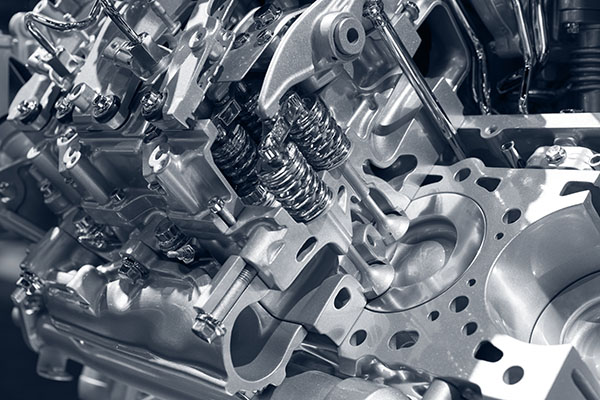
The heart of any vehicle engine lies in its internal combustion process, and at the core of this are the valves. Often overlooked but essential to engine performance, valves play a crucial role in controlling the flow of air and fuel into the combustion chambers and expelling exhaust gasses. If you want to learn about these simple, yet important components, make sure to join us in this article and we will go over everything you need to know!
Intake and Exhaust Valves
There are two main types of valves - the intake and the exhaust. Intake valves are responsible for allowing the mixture of air and fuel to enter the engine's combustion chambers. When the engine's piston moves down on its intake stroke, a vacuum is created within the cylinder. The intake valve opens at precisely the right time, allowing the air-fuel mixture to be drawn in from the intake manifold. The timing and duration of the valve opening are meticulously controlled by the engine's camshaft.
Exhaust valves, on the other hand, facilitate the expulsion of burnt gasses from the combustion chambers after the power stroke. As the piston moves up on its exhaust stroke, it pushes the exhaust gasses out of the cylinder and into the exhaust manifold. The exhaust valve opens at the appropriate moment to release the gasses into the exhaust system. Like the intake valves, the exhaust valves' timing and duration are precisely synchronized with the engine's camshaft.
Valve Timing and Lift
The timing and lift of the valves are crucial to optimize engine performance. The camshaft, driven by the engine's crankshaft, is equipped with lobes that push against the valves' valve stems, causing them to open and close. The camshaft's design determines the precise timing of valve opening and closing, which influences the engine's power, torque, and efficiency.
Valve Train Components
The valve train consists of several components that work together to ensure proper valve operation. These components include valve springs, lifters (tappets), pushrods (in pushrod engines), and rocker arms or cam followers (in overhead cam engines). The valve springs ensure that the valves remain closed when not actuated by the camshaft lobes. The lifters transmit the camshaft's movement to the pushrods or rocker's arms, which then open and close the valves.
OHC (Overhead Cam) engines feature the camshaft positioned above the cylinder head, allowing direct actuation of the valves. In contrast, pushrod engines have the camshaft located within the engine block, relying on pushrods and rocker arms to actuate the valves. OHC engines are typically more compact and offer better valvetrain efficiency, while pushrod engines are simpler and often used in V-configured engines.
Engine Maintenance & Repairs at Fuller Automotive!
When it comes to engine repairs, maintenance, or issues, Fuller Automotive is the answer! Just contact us or visit the shop straight away so we can get you back on the road ASAP, no matter the problem.